Medication Fall Risk Calculator
Your Medications
Select all medications you're currently taking that increase fall risk.
Your Fall Risk Assessment
Low Risk
Your fall risk is minimal. Continue following your healthcare provider's recommendations.
Selecting medications will increase your risk percentage. The CDC estimates that reducing FRID use could prevent about a quarter of all falls among seniors.
Every year, roughly one in three adults aged 65+ takes a tumble that leads to injury. The scary part? A large share of those falls are sparked by the very pills meant to keep us healthy. Below you’ll learn which drug classes tip the balance, how big the risk really is, and what you can do right now to lower the odds of a painful fall.
Quick takeaways
- Antidepressants, especially tricyclics and SSRIs, carry the strongest link to falls among seniors.
- Benzodiazepines increase fall risk by about 50 %; long‑acting agents are the worst offenders.
- Even common over‑the‑counter items like NSAIDs and anticholinergic bladder meds can raise the odds of a stumble.
- Annual "brown‑bag" medication reviews cut fall‑related injuries by roughly 22 %.
- AI‑powered prescription checks now spot risky combos with nearly 90 % accuracy.
Fall Risk‑Increasing Drugs (FRIDs) are medications that cause drowsiness, dizziness, or blood‑pressure swings, making older adults more likely to lose balance.
According to the American Geriatrics Society’s 2023 Beers Criteria, roughly 45 % of seniors are prescribed at least one FRID. The CDC’s STEADI program calls these drugs the "silent contributors" to the epidemic of fall‑related deaths, which now tops 36,000 lives per year in the United States.
Why older adults are especially vulnerable
Age brings two key changes: slower drug metabolism and a natural decline in balance and vision. When a medication adds a dose of sedation or drops blood pressure suddenly (orthostatic hypotension), the brain’s ability to correct a misstep falters. That’s why a drug that is harmless for a 30‑year‑old can become a trip hazard for a 78‑year‑old.
High‑risk medication classes
Research from Woolcott’s 2009 meta‑analysis and subsequent updates pin nine drug families as the biggest culprits.
Antidepressants
Both tricyclic antidepressants (TCAs) like amitriptyline and selective serotonin‑reuptake inhibitors (SSRIs) such as sertraline have been linked to a 2‑fold rise in fall incidents. The Mayo Clinic’s 2023 review found antidepressants to have the strongest statistical association of any class.
Benzodiazepines
These anxiety‑relieving pills-lorazepam, diazepam, alprazolam-are notorious for lingering sedation. The Beers Criteria cites a 50 % increase in falls, with longer‑acting agents (diazepam) outpacing shorter‑acting ones (lorazepam). Risks climb sharply after two weeks of daily use, the point at which most clinicians should consider tapering.
Sedative‑hypnotics
Drugs prescribed for insomnia-zolpidem (Ambien), eszopiclone (Lunesta), zaleplon (Sonata)-can cause complex sleep behaviors, such as walking or driving while still asleep. The CDC’s STEADI program flags them as high‑risk because side‑effects often bleed into daytime hours.
Opioids
Beyond pain relief, opioids produce dizziness, slowed reaction time, and cognitive fog. Risk ramps up with dosage: high‑potency formulations raise fall odds by roughly 80 % compared with low‑dose regimens (JAMA Health Forum, 2023).
Non‑steroidal anti‑inflammatory drugs (NSAIDs)
While useful for arthritis pain, NSAIDs can trigger fluid retention and raise blood pressure, setting the stage for orthostatic drops. Studies show a 25 % increase in fall risk attributable to these agents.
Antipsychotics
First‑generation antipsychotics (haloperidol) present a 40 % higher fall risk than newer second‑generation options (quetiapine). Sedation and extrapyramidal symptoms both impair balance.
Cardiovascular agents
Beta‑blockers, diuretics, and other antihypertensives can cause sudden blood‑pressure dips when standing up. Orthostatic hypotension is a well‑documented trigger for falls in the CDC’s STEADI guidelines.
Muscle relaxants & anticholinergics
Medications like baclofen (muscle spasm) and anticholinergic bladder drugs (oxybutynin) lead to confusion, blurred vision, and pronounced drowsiness. Baclofen, in particular, has been shown to raise fall risk by about 70 %.
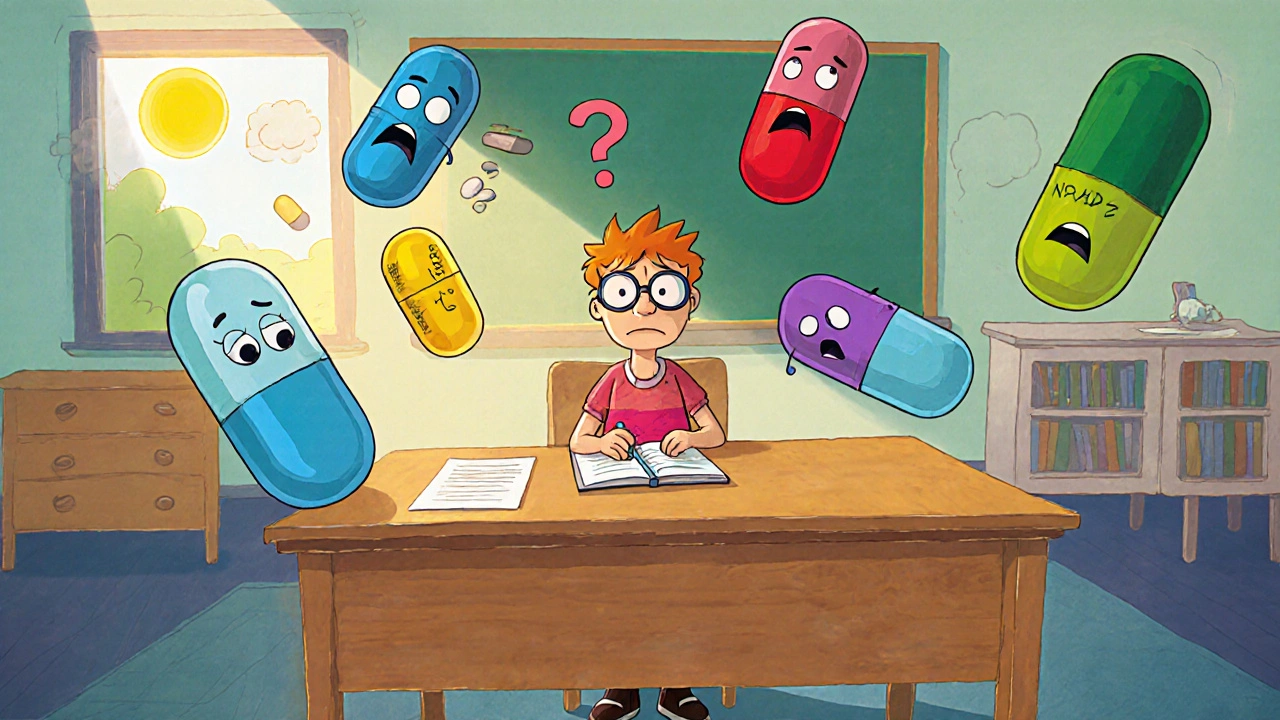
How risky are these drugs? A side‑by‑side look
| Medication class | Typical risk increase | Key examples |
|---|---|---|
| Antidepressants | ~100 % (2× risk) | SSRIs (sertraline), TCAs (amitriptyline) |
| Benzodiazepines | ~50 % | Diazepam, lorazepam, alprazolam |
| Sedative‑hypnotics | ~45 % | Zolpidem, eszopiclone, zaleplon |
| Opioids (high dose) | ~80 % | Oxycodone, morphine |
| NSAIDs | ~25 % | Ibuprofen, naproxen |
| Antipsychotics | ~40 % | Haloperidol, quetiapine |
| Cardiovascular agents | ~30 % | Beta‑blockers, diuretics |
| Muscle relaxants | ~70 % | Baclofen, tizanidine |
| Anticholinergics | ~35 % | Oxybutynin, tiotropium |
Three‑step framework to curb medication‑related falls
The CDC’s STEADI program boils the approach down to STOP, SWITCH, REDUCE.
- STOP drugs that aren’t absolutely needed (e.g., nighttime benzodiazepines for occasional insomnia).
- SWITCH to safer alternatives-consider CBT‑I for sleep, duloxetine (a lower‑risk antidepressant) instead of amitriptyline, or acetaminophen for mild pain rather than NSAIDs.
- REDUCE doses gradually, especially for benzodiazepines and opioids. An 8‑12‑week taper is the standard to avoid withdrawal.
Practical steps for clinicians
Implementing the framework takes a systematic review.
- Annual brown‑bag review: Ask patients to bring every pill, supplement, and over‑the‑counter product to the visit.
- Use STOPP/START criteria: These checklists flag 84 high‑risk meds for seniors, including most FRIDs.
- Pharmacist collaboration: Studies show pharmacist‑led reviews cut falls by 22 %.
- Leverage AI tools: New platforms can scan a medication list and highlight risky combos with >89 % accuracy (JAMA Med Direct, 2024).
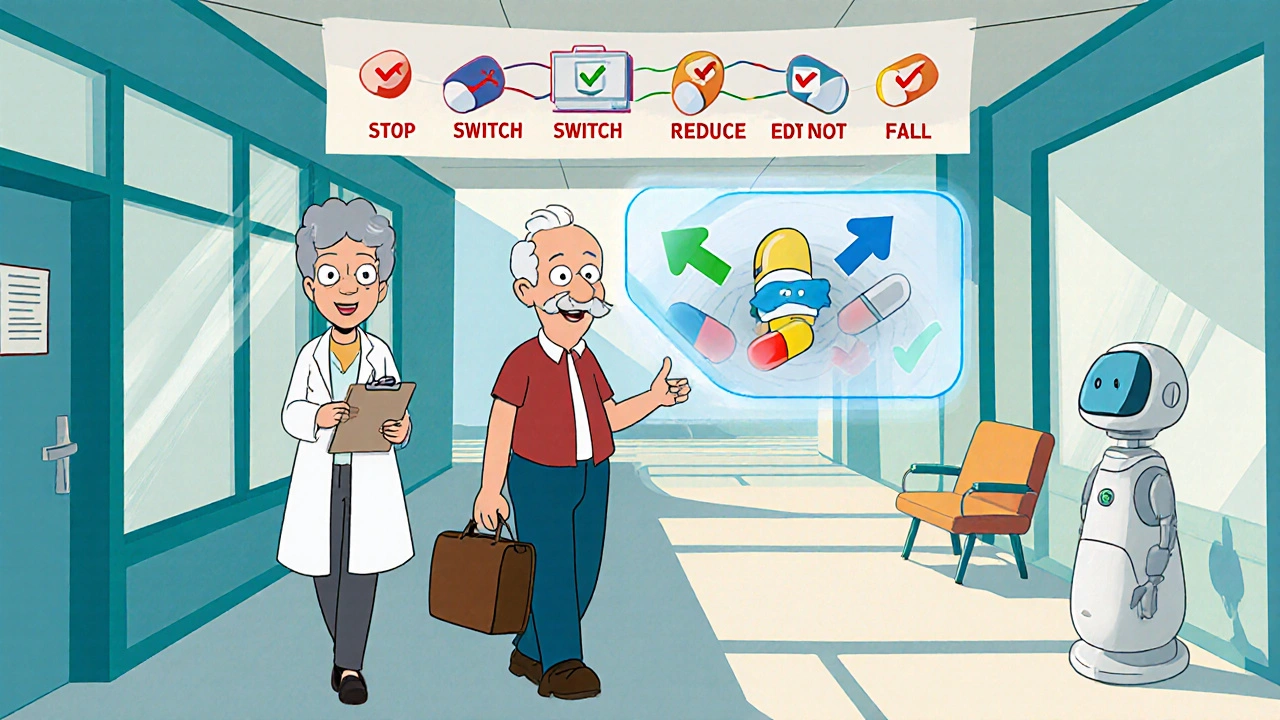
What patients and caregivers can do
Even if you’re not a clinician, you can guard against falls.
- Maintain a written list of all meds; update it whenever a new prescription arrives.
- Ask your doctor specifically about "fall risk" when a new drug is prescribed.
- Consider non‑drug therapies first-exercise programs, vision correction, home safety modifications.
- Report any dizziness, nighttime confusion, or near‑falls immediately; adjustments can often be made quickly.
Emerging tools and future directions
Two trends are reshaping the landscape.
- Telehealth medication reviews: The CDC’s 2023 expansion lets pharmacists conduct virtual brown‑bag sessions, improving access for rural seniors.
- AI‑driven deprescribing protocols: Pilot programs funded by the National Institute on Aging are testing algorithms that suggest taper schedules tailored to each patient’s kidney function and frailty score.
Both innovations aim to close the knowledge gap that 63 % of older adults report-most don’t realize their prescriptions increase fall risk.
Bottom line
Medication‑related falls are not inevitable. By identifying the high‑risk drug classes, reviewing regimens annually, and swapping to safer options, you can shrink the chance of a painful tumble dramatically. The math is clear: cutting FRID use could prevent about a quarter of all falls among seniors, saving billions in health‑care costs and preserving independence for millions.
Which medication class poses the greatest fall risk for older adults?
Antidepressants, especially tricyclics and SSRIs, have the strongest statistical link to falls-about a two‑fold increase compared with no use.
Can over‑the‑counter drugs like NSAIDs cause falls?
Yes. NSAIDs can raise blood pressure and cause fluid shifts that lead to orthostatic hypotension, increasing fall risk by roughly 25 %.
What’s the safest way to treat insomnia without raising fall risk?
Cognitive Behavioral Therapy for Insomnia (CBT‑I) is first‑line; it improves sleep in 70‑80 % of older adults without any medication side‑effects.
How quickly should benzodiazepines be tapered?
Guidelines recommend an 8‑ to 12‑week taper, reducing the dose by 10‑25 % every 1‑2 weeks, while monitoring for withdrawal symptoms.
Are there any apps that help seniors track high‑risk meds?
Several pharmacy‑linked apps now include "Fall‑Risk Alerts" that flag FRIDs and suggest safer alternatives; they integrate with telehealth platforms for remote reviews.
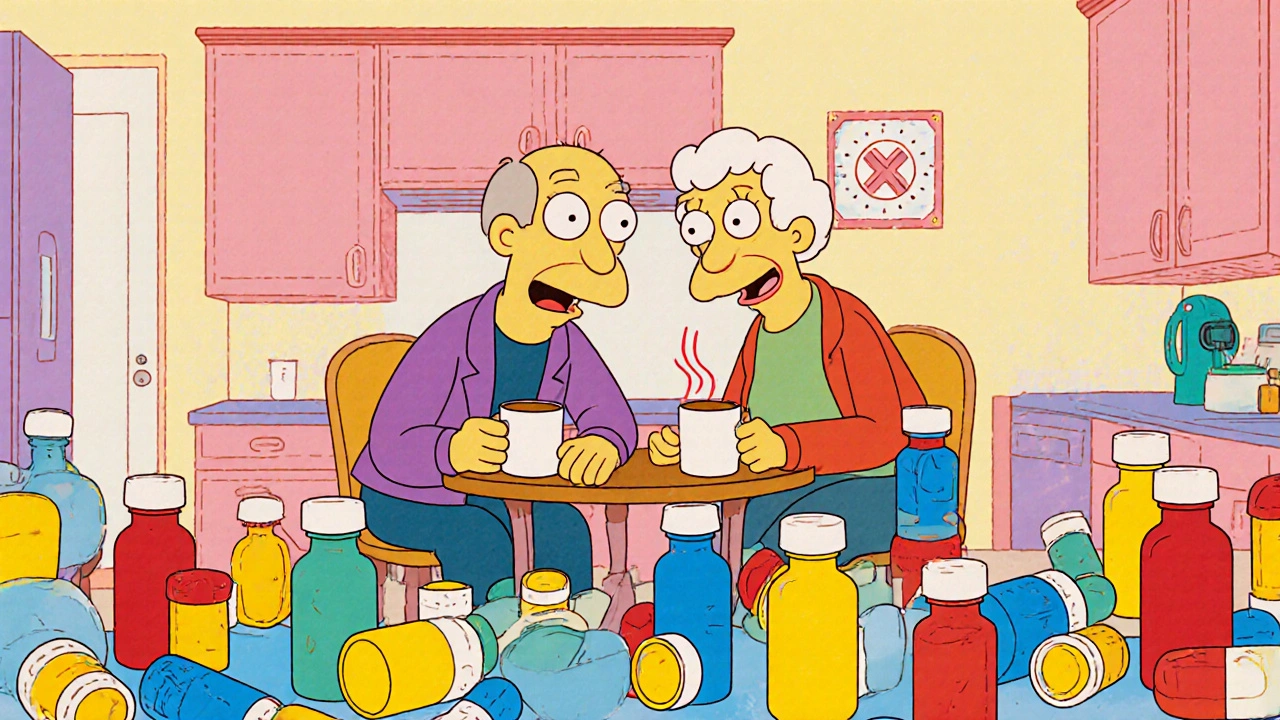
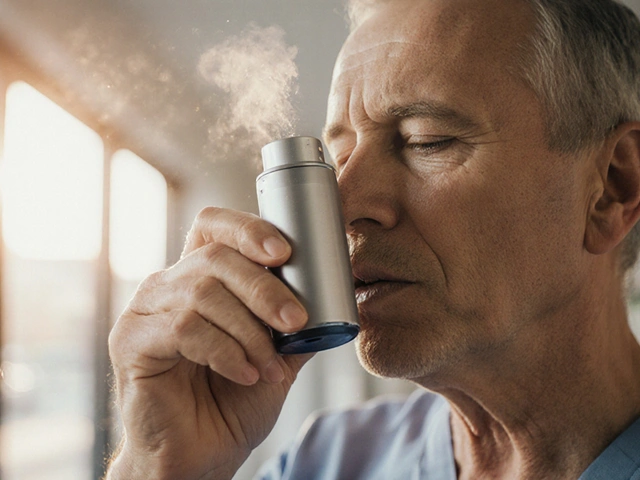 Combimist L Inhaler vs Alternatives: Detailed Comparison Guide
Combimist L Inhaler vs Alternatives: Detailed Comparison Guide
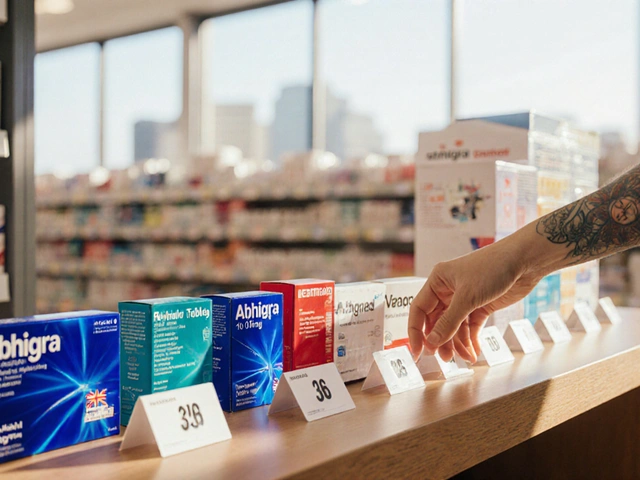 Abhigra vs Other Sildenafil Brands: Full Comparison
Abhigra vs Other Sildenafil Brands: Full Comparison
 How to Comfort a Bird After Deplumation - Step‑by‑Step Guide
How to Comfort a Bird After Deplumation - Step‑by‑Step Guide
 How Antibiotics Treat Bladder Infections: What You Need to Know
How Antibiotics Treat Bladder Infections: What You Need to Know
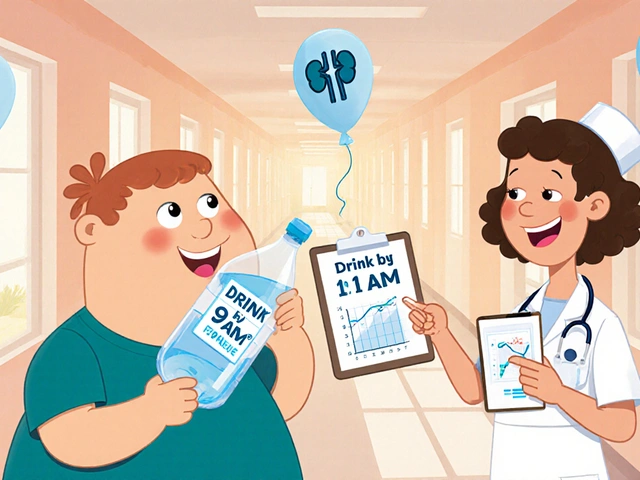 Hydration Plans to Protect Kidneys from Nephrotoxic Medications
Hydration Plans to Protect Kidneys from Nephrotoxic Medications
Rhea Lesandra
October 26, 2025 AT 15:20Great rundown! I love how you broke down the risky meds and gave clear steps to cut down falls.
Jennyfer Collin
October 26, 2025 AT 20:53While the data presented is compelling, one must consider the possibility that pharmaceutical companies have a vested interest in downplaying the adverse effects of their products. Their influence on research funding could bias the findings, leading to an underestimation of fall risk associated with certain prescriptions. 🧐
Tim Waghorn
October 27, 2025 AT 02:26The article accurately cites the Beers Criteria and recent meta‑analyses, providing a solid evidence base for the identified high‑risk drug classes. It is noteworthy that the relative risk percentages are derived from large cohort studies, which enhances their external validity. Nonetheless, clinicians should remain vigilant for polypharmacy interactions that may exacerbate orthostatic hypotension beyond the figures quoted.
Jacqui Bryant
October 27, 2025 AT 08:00Thanks for the info – it’s super helpful. I’m going to talk to my doctor about cutting back on the bedtime benzos.
Paul Luxford
October 27, 2025 AT 13:33I appreciate the practical framework; STOP, SWITCH, REDUCE is easy to remember. At the same time, it’s important to recognize that for some patients, certain FRIDs may be the only viable option for symptom control. A collaborative approach with pharmacists can help tailor deprescribing plans without compromising quality of life.
Carla Smalls
October 27, 2025 AT 19:06What a thorough guide! I especially like the emphasis on annual brown‑bag reviews – they’re a simple yet powerful tool. Getting a full medication list together can uncover hidden OTC culprits like NSAIDs that many patients forget to mention. In my experience, involving a clinical pharmacist early on leads to faster dose adjustments and fewer falls. The three‑step STOP‑SWITCH‑REDUCE workflow aligns nicely with shared decision‑making principles. Also, the mention of CBT‑I for insomnia gives a concrete alternative to sedatives. Remember to encourage patients to keep a written list and bring it to every appointment. Small habits like this can make a huge difference in preventing avoidable injuries.
Erik Redli
October 28, 2025 AT 00:40All this “evidence‑based” advice sounds like another scare‑tactic campaign to get doctors to ditch effective meds. Not every patient on a benzodiazepine is going to fall, and denying them relief for anxiety can be just as harmful. The article glosses over the benefits of these drugs for proper indications.
Brady Johnson
October 28, 2025 AT 06:13Ah, the classic lamentations of the “fall‑risk” crusade, drenched in statistics that masquerade as indisputable truth. Let us peel back the veil: the cited 2‑fold increase for antidepressants, for instance, is derived from heterogeneous studies that lump together vastly different populations, dosing regimens, and diagnostic criteria. Moreover, the meta‑analysis fails to account for confounding variables such as comorbid depression severity, which itself predisposes patients to reduced mobility and attentional lapses. The same applies to the purported 50 % risk bump from benzodiazepines; the underlying anxiety disorder often co‑occurs with insomnia, both of which independently elevate fall risk. When the authors trumpet AI‑driven prescription checks with "90 % accuracy," they ignore the black‑box nature of many algorithms, which can propagate hidden biases into clinical decision‑making. One must also question the practicality of annual brown‑bag reviews in under‑resourced clinics where pharmacists are a scarce commodity. The narrative pushes a one‑size‑fits‑all deprescribing formula, yet elderly patients are a mosaic of pharmacokinetic profiles, renal function variations, and personal preferences that resist such simplification. While I concede that medication review is valuable, the article’s tone borders on alarmist, potentially prompting clinicians to withdraw essential therapy out of fear rather than reason. In short, the data is intriguing, but the conclusions drawn are over‑generalized, and the recommendations, though well‑intentioned, may inadvertently harm the very population they aim to protect.
Jay Campbell
October 28, 2025 AT 11:46Solid points, thanks for sharing.
Laura Hibbard
October 28, 2025 AT 17:20Oh wow, because we all just sit around waiting for our doctors to magically know every pill we take, right? Nothing like a simple “stop, switch, reduce” mantra to solve decades of complex polypharmacy.
Rachel Zack
October 28, 2025 AT 22:53It is totally unaccaptable that people keep pusshing these dangerous medicines on elderly folk without thinkng about the consequnces. We need more morall integrity in pharmcology.
Lori Brown
October 29, 2025 AT 04:26Love the actionable steps – definitely going to try the CBT‑I option and keep a med list handy! 😊